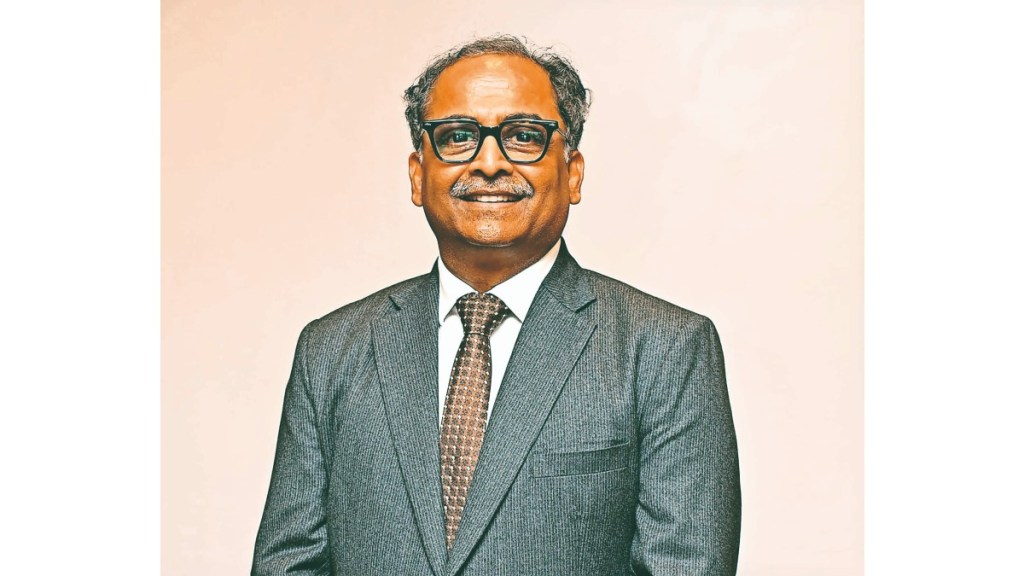Indian Overseas Bank (IOB) is gearing up to aggressively expand lending to the 14 sectors identified under the government’s production linked incentive (PLI) scheme. In an interview with Narayanan V, managing director and CEO Ajay Kumar Srivastava outlines the lending focus for the current fiscal, and how the bank aims to cushion margins amid an expected rate-cut cycle. Excerpts:
Is the sluggish credit growth in the industry a concern?
I wouldn’t directly link the slowdown in the credit growth to lack of credit demand. We are seeing a healthy traction in demand across retail, agri, MSMEs, and even corporates. I’m not referring to large corporates with credit needs of ₹1,000–2,000 crore, but there is reasonable demand from the broader corporate segment. One key reason for the moderation in the credit growth is the lack of resources. While credit has been growing at 14–15% over the past two-three years, deposit growth remains in single digit. Despite best efforts of banks, the credit-deposit gap persists due to limited deposit accretion. Although there’s no prescribed credit-to-deposit ratio, banks prefer to stay within a comfortable threshold. So, the current pace of the credit growth — especially for most banks — can be attributed to constrained availability of resources, rather than weak demand.
Deposit mobilisation has been a challenge for the industry. Has it improved?
That challenge still remains, and I believe it will continue. In IOB’s case, we may not be growing at 11–13%, but there is some growth. Based on unaudited numbers for the first quarter, I can say the growth has been good. We have surpassed most of our budgeted targets by a substantial margin. The deposit growth may stay in single digit. Last year, deposits grew by almost 10%, and that too without relying on bulk deposits. It came mainly from core retail term deposits and CASA. Currently, 95% of our deposit portfolio is retail. We have aggressively been onboarding customers and this strategy is yielding results. Over the last two years, we onboarded around 6.5 million customers and mobilised ₹21,000 crore in CASA deposits, which continues to remain with us. One of the challenges is that besides bank deposit, people now have other investment avenues.
What is your lending strategy for this year?
Retail, agriculture, MSME (RAM) and corporate together account for about 95% of our credit portfolio. Our retail book has been growing at around 17–18% year-on-year, and that will continue — there’s never really a slowdown in this segment. With the recent repo rate cut, loans have become cheaper. To further encourage borrowing, we have waived processing fees as well. In agriculture, beyond jewel loans, we have designed multiple products that cater to core agri activities. One initiative is providing loans to farmer producer organisations to promote organic farming. We have recently tied up with Amul and Richplus, Amul’s organic farming partner, to onboard 100,000 farmers for organic farming.
When it comes to large corporates, we are focusing on the 14 sectors covered under the PLI scheme. That’s our top priority. Our next focus area is infrastructure and logistics projects, including those under the Centre’s Gati Shakti programme. Many of our existing corporate clients are expanding and we are supporting their capex needs. IOB’s credit portfolio is equally distributed across the retail, agri, MSME and corporate segments, leaving no scope for any concentration risk.
How do you plan to offset the rate cut impact on margins?
Our entire retail and MSME portfolio is linked to the repo rate. In the last four months, the repo rate has been cut by nearly 1%, and the benefit has been passed on immediately to borrowers. This will have a significant impact on interest income since repo-linked loans make up for about 50% of our portfolio. We are trying to offset this by reducing deposit rates.
Secondly, we are increasing the share of marginal cost of funds-based lending rate (MCLR)-linked loans. We are gradually moving corporate and agriculture loans, which form 50% of our credit portfolio, to MCLR. Of course, MCLR loans will also have rate reduction, but it happens with a lag. For new sanctions and renewals, we hold detailed discussions with borrowers and shift them to MCLR, once there’s a consensus. So, margins will remain under stress, but I am confident we will be able to maintain them around 3%.


